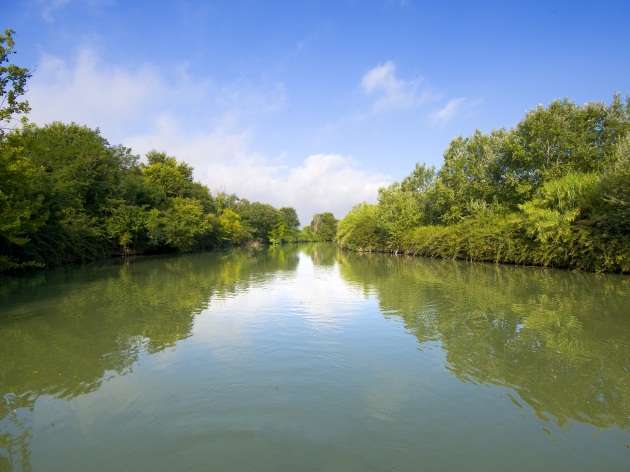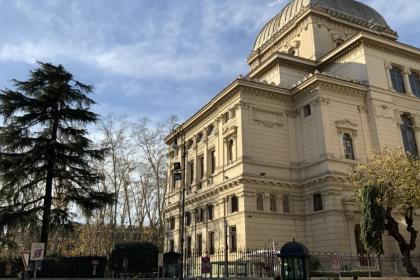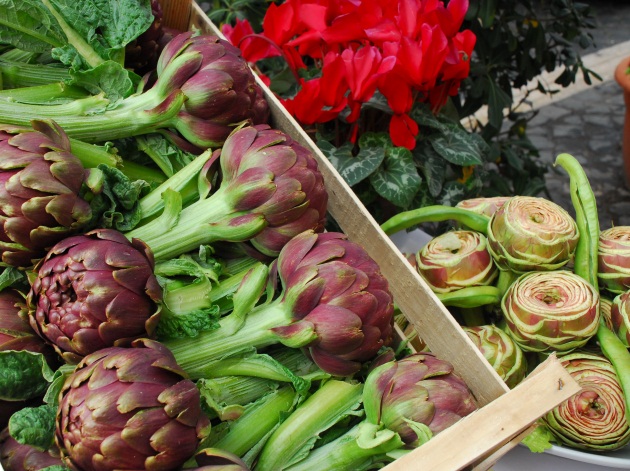You are here
news
House of the Knights of Rhodes
Location
Sixtus Bridge
Location
Civic Museum of Zoology
Location
The basilica of Sant’Andrea delle Fratte
Location
Torre della Scimmia - Tower of the Monkey
Location
History of the drainage
The coast often evokes images related to the sea, sun and fun. Few know the history of the drainage of Ostia. Here, in the 19th century, arrived laborers mainly from the province of Ravenna, who provided their expertise to drain the marshes and clear unhealthy areas. Marshes alternated with wooded areas, therefore water stagnated and did not drain to the sea. A first attempt to reclaim the area was implemented by the Papal States between 1858 and 1868. The goal, ambitious for that time, was to make the land productive draining the pond to make it cultivable, and, to do that, a company, the ‘Pio Ostiense’, was founded with French capital. The first attempt was carried out by a French engineer, Froyer. The recovery was short-lived; the situation is well described by Lattanzi in his essay Pane e Lavoro, Storia di una colonia cooperativa: i braccianti romagnoli e la bonifica di Ostia [Bread and Work, History of a cooperative colony: the laborers from Romagna and the drainage of Ostia] when he says: «The intention of the Frenchman was certainly appreciable and later proponents of the drainage “by filling” will be numerous and determined, but his feverish activity faced different problems due both to the nature of the place and to a miscalculation of the slope of the penstock linking the Tiber to the pond. The delta area, in fact, lent itself to little works of hydraulic engineering: the dense vegetation and the continued unevenness of the land caused continual difficulties, while an intricate maze of “gutters” and “pools” required to employ significant financial resources and technologies that were not yet available. In a short time, dams, canals and stockades, called “passonate”, were swallowed up by the swamp, determining the failure of the attempt». The supporters of the drainage were not discouraged and committed the next attempt to Prof. Guidi and the engineer Fumaroli, respectively designer and constructor of the new dewatering machine. Also this procedure proved to be a failure. The incorrect analysis and the miscalculations led to a series of unsuccessful results, including the attempt to create a series of locks that, because of poor maintenance, led to yet another failure. They tried a system called “continuous mouth”, but nothing! With the United State the operation became even more urgent: it was inconceivable that the coastline of the Capital of the kingdom was in still so unhealthy conditions. Several committees in different years did inspections to check what it had to be done, they resumed the attempts but failed once again. After the works in 1873, a health centre was established in Ostia. In 1884, 500 laborers arrived from Ravenna, the real protagonists of the drainage of the area.

Artichoke My Love
Il principe "verde" della cucina romana
The Romans conquered the world marching on a stomach full of beans, ewe’s milk cheese and lettuce. When a legion arrived in a given territory and it was thought the campaign would be a protracted one, they planted their lettuces, a favourite among soldiers. Apicius, Columella, Pliny, Martial, Horace, Juvenal, Petronius and Varro all noted the Romans’ love of vegetables (whether wild or cultivated), which they consumed in vast quantities (e.g. asparagus, chicory, beetroot and cabbage).
Until the close of the nineteenth century, many vegetable plots were to be found in Rome’s old city centre, and notably in the area known as “del Greco alle Quattro fontane” as well as in the Circus Maximus
During the Second World War and the German occupation, the vegetable plots were shifted to the outskirts, but the Romans’ enduring love of market garden products remained, with seasonal produce on the top of the list. This leads us to the topic of artichokes (“carciofi”), varieties of which are grown in the countryside of the province of Rome and other parts of the region such as Sezze, Velletri and Tarquinia. There are various Roman artichoke recipes.
They may be prepared, for example, Roman-style − or “alla romana” − by stuffing them with aromatic herbs. Or they may be set on their stem and served with peas (a delicate combination), conserved in oil or deep-fried “alla giudia” (i.e. according to the old Roman Jewish recipe). The artichoke season is ending, so hurry to get yours now! Here’s a classic recipe, known as “carciofo alla romana”.
Recipe for Roman-style artichokes (“carciofo alla romana”)
Ingredients (for 4):
- 4 artichokes (“mammole” variety)
- 2 cloves of garlic
- 1 lemon
- Fresh mint leaves
- Extra virgin olive oil (we recommend an olive oil from the Lazio region)
- Salt and black pepper (we recommend Pepe di Rimbàs from Malaysia (Presidio Internazionale Slow Food)
Directions
First you must clean your artichokes. To remove the tougher outer leaves, use a small sharp knife and work upward with a spiralling movement toward the top. Now shorten the stem, leaving only four centimetres. As you clean your artichoke, rub lemon in (but make sure the artichoke isn’t blackened by it). You must manually spread the leaves open and remove the “barbetta” or “beard” inside. Insert sliced garlic clove, mint, salt and pepper. Now place the artichokes, with the stem up, into a casserole dish suitable for your oven. Add a glass of water and some spoonfuls of olive oil, plus a little more salt and pepper. Cover with a lid and allow to simmer. Then transfer the dish to a pre-heated oven (180°) where the artichokes shall remain for 45-50 minutes until nicely tender. Serve warm or cold.
Recipe for Roman-Jewish Fried Artichokes ("carciofo alla Giudia")
Ingredients (for 4)
- 4 Roman artichokes
- 1,5 lt extra virgin olive oil
- 1/2 lemon juice
- Salt
- Pepper
Directions
Shave off the purple tough outer leaves of the artichokes until you get to the tender pale green-yellow ones and create a bulbous shape. Cut off at least an inch of the thorny top. Put the artichokes immediately in a bowl of water with lemon juice for 10 minutes to prevent browning. Then dry them and beat two of them together or tap the flat top against the table to loosen the leaves. Season with salt and pepper, and deep-fry in olive oil.
Heat the oil in a deep pan so that the artichokes will be fully immersed while cooking. The oil has to be hot, but not too hot (150 C° should be ideal) so that even the heart gets cooked while getting crunchy leaves.
Sprinkle them with water (or white wine) and dip them in oil, raising the temperature slightly but being careful not to burn them. Remove them from the oil, cool them upside down in a tray for about twenty minutes (so that they lose the excess oil) and serve with a sprinkle of salt.
The tradition at the table; the Roman-Jewish cuisine

The old Jewish Quarter

 Condividi
Condividi













































